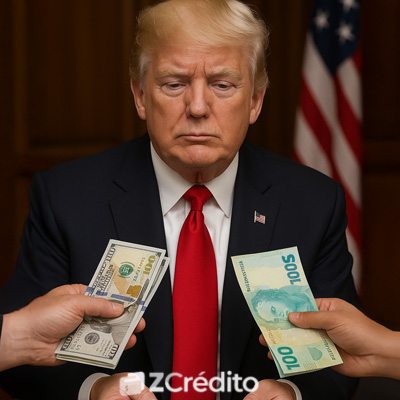Trump Raises Tariffs: How It Affects the U.S. and Brazilian Economies
Trump raises tariffs in a bold move that could reshape global trade dynamics, and the effects are already stirring debate among economists and policymakers alike.
With the reintroduction of high tariffs targeting strategic imports, former President Donald Trump’s proposed economic plan, aims to protect American industry.
However, experts warn that the consequences could be far-reaching, with a greater negative impact on the U.S. economy than on countries like Brazil.
Let’s explore the ripple effects of these tariffs on both economies, including industry-specific outcomes, job markets, and broader GDP shifts.
Trump Raises Tariffs: What’s in the New Proposal? 🔎
The new tariff proposal by Trump includes sweeping changes to international trade policy. Under the plan, tariffs of 50% would be applied to products from several countries, including Brazil, while a 30% blanket tariff would hit all imports from China.
Certain increases would also apply to products imported from Japan, South Korea, and other key trading nations.
The idea is to discourage imports and stimulate domestic production. However, such widespread tariffs, known as “tarifaço” in Brazil, could trigger global retaliation, raise production costs, and disrupt supply chains.
Analysts from the National Confederation of Industry (CNI) and UFMG (Federal University of Minas Gerais) suggest that these policies could backfire economically, especially for the United States.
What Happens to the U.S. Economy When Trump Raises Tariffs? 📊

When Trump raises tariffs, the U.S. economy may face unintended consequences. While the short-term goal is to protect local manufacturers, the longer-term result could be slower growth, rising inflation, and job losses in export-dependent industries.
Economic Growth Decline
According to simulations by CNI using the Global Trade Analysis Project (GTAP) model, the U.S. GDP could shrink by 0.37% under the proposed tariff policies.
Higher import costs mean increased prices for businesses and consumers, ultimately weakening purchasing power and domestic demand.
Job Market Concerns
Tariffs can lead to job creation in protected sectors but job destruction in others. Export industries and manufacturers that rely on foreign components may reduce hiring or cut positions.
Rising production costs due to more expensive imported materials could force some companies to relocate operations abroad, precisely the opposite of what the tariffs intend to achieve.
Trump Raises Tariffs: What This Means for Brazil 📍
Although Brazil is directly targeted in the tariff plan, the economic damage is relatively milder compared to the U.S.
GDP and Trade Impact
The CNI study estimates that the Brazilian GDP would fall by 0.16%, about R$19.2 billion, due to the trade restrictions.
Brazilian exports are expected to shrink by approximately R$52 billion, with some sectors suffering disproportionately.
Sector-Specific Effects
- Tractors and agricultural machinery: Exports may fall by 23%, with a 1.9% drop in national production.
- Aviation and transportation equipment: A projected 22% decrease in exports and 9.2% decline in output.
- Poultry industry: Brazil’s chicken meat exports could drop 11.3%, with a corresponding 4.2% reduction in domestic production.
Job Losses and Regional Disparities
The expected job loss in Brazil is around 110,000 positions, mostly in industrialized states. The hardest-hit regions include:
- São Paulo: –R$4.4 billion in GDP
- Rio Grande do Sul and Paraná: –R$1.9 billion each
- Santa Catarina: –R$1.7 billion
- Minas Gerais: –R$1.66 billion
While the impact is notable, Brazil’s diversified trade relationships and existing tariff structures (an average of 2.7% on U.S. goods) provide some cushioning.
Global Trade and Inflation Risks ⚠️
Beyond the U.S. and Brazil, Trump raises tariffs at a time when global trade is already under pressure from supply chain disruptions, geopolitical tensions, and economic recovery from the pandemic.
Trade Volume Contraction
Experts predict a reduction of up to US$483 billion in global trade volume, equating to a 2.1% drop. This could further destabilize emerging economies and reduce growth potential in developing markets.
Inflationary Pressure
Raising import costs tends to fuel inflation. For example, U.S. inflation had already climbed to 2.7% in June, and new tariffs could push prices higher by making imported goods more expensive.
The result? Reduced household consumption, tighter monetary policies, and a potential slowdown in investment.
A Risky Move with Global Consequences 🌐
When Trump raises tariffs, the short-term political message may be one of nationalism. However, data from research groups show that such a policy could be more harmful to the U.S. economy than to its trade partners.
The proposed measures risk triggering a global slowdown, inflating domestic prices, and reducing consumer purchasing power.
Ultimately, the new wave of tariffs represents a lose-lose scenario. While intended to protect, they may instead isolate economies, reduce competitiveness, and burden consumers with higher prices, both at home and abroad.
❓ Frequently Asked Questions
1. How do these tariffs hurt the U.S. economy?
- While they intend to help domestic industries, tariffs raise production and consumer costs, shrink export opportunities, and disrupt supply chains, potentially leading to a decrease in GDP and job losses.
2. How is Brazil affected compared to the U.S.?
- Brazil faces a GDP decline of 0.16%, while the U.S. may see a 0.37% reduction. Though Brazil is directly targeted, the structure of its trade network and production models helps mitigate some of the damage.
3. Will global trade suffer?
- Yes. The estimated decline in international trade could reach US$483 billion, weakening economic stability across multiple regions.